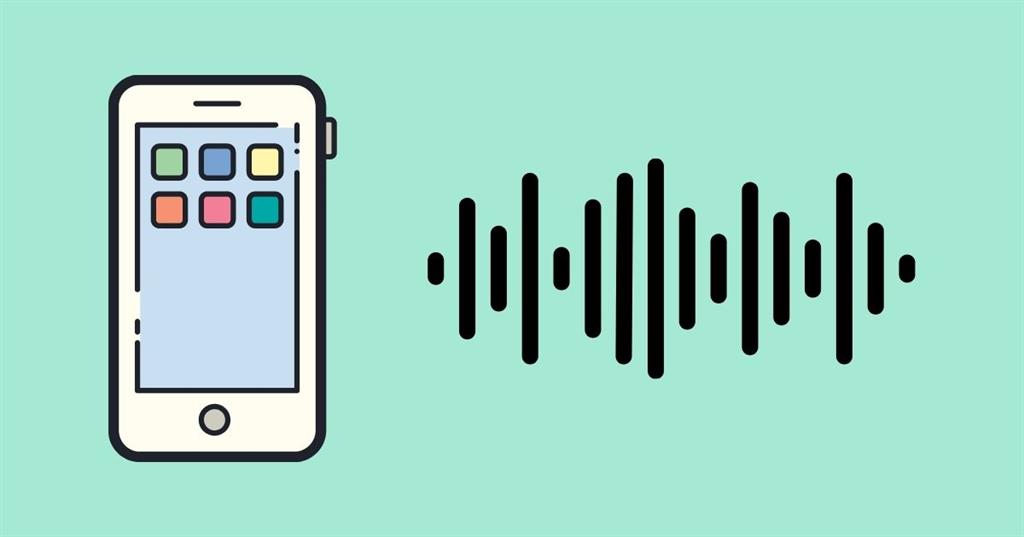The post Social Audio: An Interactive Tool for Marketing and Brand Promotion first appeared on Publir.
]]>An average US adult spent 7:50 minutes in 2020 with a screen, while children have spent approximately 4 hours a day, engaging themselves in video games, chatting, messaging, and watching entertainment programs online. It was exactly at this point when screen fatigue takes a heavy toll on people’s psyche! To overcome this, ‘Social Audio’, conversational social media audio came into existence. The clubhouse is a pioneering social audio platform and was introduced in February 2020.
Defining Social Audio

Social Audio is a combination of four elements, namely, social media, conversational tools, digital audio, and virtual event. It aptly filled the gap when humans were craving for a social connection and interaction. Before this time, social media platforms like Twitter, Facebook, YouTube, Snapchat, and to name a few, have promoted interactions through text, images, emojis, and streaming/video-based content. The audio was only complementary to visual media.
Social audio added the missing contextual cues of text messages, as the listener can make out the emotional context of the conversation in social audio. Podcasts might reach audiences with highly personalized messages, social audio is an extension to podcasts, adding personalized audience interaction to it. While the text is too short to convey exact meaning and video is too heavy, causing screen fatigue, Social Audio emerged as a just and apt Goldilocks medium for social interactions.
Till date, Clubhouse alone enjoys ten million users, and several other major social media platforms, including, Twitter, LinkedIn, Facebook, and Discord have entered the social audio space. There are as many as 43 entries, including startups like Fireside and Stereo, making headways in this field.
Social Audio as a Marketing Tool

For a long, companies have been using interactive calls for customer care and for building customer relations. They are meant to address customer grievances, technical issues, and transactional challenges they encounter during or after purchasing a product or service. Social audio is entirely different from telephonic or online interaction between companies and customers in many ways.
Unlike podcasts, where followers download them to listen at their convenience, social audio allows companies to have a live interaction with personalized information. Unlike press releases and marketing communication with buzzwords, where customer care representatives repeat them mechanically, interactive social audio allows thoroughly trained communicators to use humor, wit, and warmth in their discussion. Initially, Clubhouse prohibited sharing the social audio conversation in any form, including, recording, copying, and sharing. Of late, Clubhouse enabled users to share a Clubhouse room link on Twitter and agreed that it is recording the social audio sessions.
Companies can engage highly trained professionals to have a dialogue, discussion, and conversation with existing and prospective customers, which need not be a direct sales talk. Companies or brands can make the best use of their platform for influencer marketing, inspirational leadership talks, virtual brand promotion events, brand chats, and social listening. Given the competition among the social media platforms to enter this space, and allowing users to link social audio links to their social media accounts, they may get integrated with social media channels in the future.
Jeremiah Owyang, an Advisor to Fortune 500 companies on Digital Business has identified 20 different ways in which the business community can employ social audio as a marketing tool, including, but not limited to;
- Advocacy
- Employee Engagement
- Customer care
- Influencer marketing
- Education
- Entertainment
- Employee relations
- Cultural nuance analysis
- Heat maps
- Content optimization
Conversation forecasts, and to mention a few.
From data collection and analytics, social audio can serve the brands in many ways;
- Since conversations can be recorded, companies can extract rich data on customer preferences and attitudes.
- They can apply analytics to measure audience metrics to shed insights on the number of people attending, time spent on each session, and audience engagement on this platform.
- It allows companies to rate top influencers, the most trending topics of the time, and their reach to the audience so that they can build marketing strategies around them.
- They can measure click-through rates and CTA responses to reach a unique, niche audience with messages.
- Large scale emergence of Social Audio provides unique opportunities for innovations, including;
- Development of tools and techniques to analyze voice and emotional cues
- Software to analyze social network behaviors and the impact of influencers on the audience.
Brand Promotion through Social Audio

Social audio can be a powerful tool for brand storytelling, as it is one of the most popular ways of product launch and for creating brand awareness. Organizations can equally employ social audio as an effective tool for corporate training. The other brand promotional activities possible through social audio include,
- Sponsored Audio sessions
- Subscribers- only Social audio
- Branded Social Audio Chambers/rooms
- In-app ads, adding words, music, and storytelling
- Tipping options
- Fundraising
- Social audio as an e-commerce tool
Future Applications/Use Cases of Social Audio
- Social audio platforms can integrate with the podcast industry to circulate the recorded sessions of live social audio sessions.
- Creators and influencers can get integrated with the cryptocurrency platforms, and NFT to monetize their fandom.
- Several new tools to improve voice quality, voice filters for augmented voice experiences, and AI-enabled text to voice Bot translations may be integrated into social audio for enhanced user experience.
- Thematic chat or social audio rooms such as motivational rooms or rooms for brainstorming business ideas may appear.
- Companies prefer to integrate voice-enabled customer services to their websites for enhanced user experience.
- Social audio platforms can monetize customer data, sharing them with advertisers and governments.
- Social Audio Apps and In-app advertising space for the platforms.
Jeremiah Owyang predicted six new product categories from social audio
- Social Audio Analytics to record, analyze, and provide insights for better optimization of social audio conversations.
- Social Management systems that provide software to manage and integrate social audio networks like Clubhouse, Discord, and others in one go.
- Social Audio Enterprise Software will provide a class of enterprise-ready voice systems for use cases like employer-employee conversations and business-to-customer conversations.
- Social Audio Services and Advisors comprises a wide range of advisors to offer education, strategy, content planning, voice talents, executive training, analysis, and brand recommendations.
- A marketplace for voice and conversational skill-related talent.
Challenges to Social Audio
Social Audio is a nascent industry and getting measurable metrics is a great challenge. Toxic speech, including bullying, harassment, and discrimination have emerged as some of the pertinent challenges in social audio. Social audio content moderation and content curating demand specific skillsets and expertise, which are not readily available for this emerging industry.
Software Industry Responses to Social Audio Challenges
Intel is currently testing a new AI-powered tool called “Bleep” to identify and automatically remove offensive words from the audio content. Instead of removing abusive content of all types, including hate and discrimination, Beep will allow users to select whether they want none, some, most, or all of any particular content. AI-enabled filters to a certain extent can moderate content, while social audio platforms are currently handling such issues manually, by carefully examining the live social audio session. Going by the audience response to this medium and its adoption, manual referees for content moderation is said than done and the industry must gear up to find ways to tackle this issue.
Final Thoughts
Social audio is expected to skyrocket over the years to come. It is expected to expand beyond Clubhouse or Twitter spaces, with the entry of several other players, who are established brands and startups. Tech giants may equally step in to acquire popular social audio startups. Massive adoption and usage may lead to social audio integration into every digital touchpoint and may become part of digital interactions in the future, in addition to text-based comments and emotions.
The post Social Audio: An Interactive Tool for Marketing and Brand Promotion first appeared on Publir.
]]>The post What Is Influencer Marketing and How to Develop your Strategy first appeared on Publir.
]]>With these changes, digital media platforms have ushered in new faces as creators and influencers wield personal relations with their followers as friends, neighbors, mentors, and more. They are ordinary people like you and me and have built a fandom over the years with a niche audience that is eager to listen to them. Brands are equally eager to leverage their influencing abilities to promote their products or services in a variety of unforeseen ways.
Defining Influencer Marketing

Influencer marketing is leveraging the potentiality of an individual to represent a product or service on behalf of the brand to motivate their followers to visit the product pages, read/follow reviews, recommend it to a friend or neighbor, or ultimately buy it.
Influencer marketing works because the followers trust the influencer as an authentic source, their role model, or their favorite mentor. Some pet owners have even opened social media accounts for their dogs, cats, and hedgehogs, and amassed large followings as influencers.
Influencers can have a lot of power over big brands. For example, Coca-Cola’s brand value dropped from $242 billion to $238 billion when the star football player Cristiano Ronaldo uttered the word ‘’Agua” (Water) in Portuguese, as against two bottles of
Coca-Cola placed in front of him at the Euro 2020 press conference. This gesture showcases the role of influencers in promoting or denouncing a brand. Ronaldo enjoys 300 million followers on Instagram. Although it is not always possible for brands to rope in star players or celebrities to promote their brands, a mere mention for or against a product can make a big difference and influence their target audience.
The current social media landscape offers companies a wide range of influencers with micro and nano followers and depending upon the budget and the goal of the influencer marketing campaign, the brands can choose the best influencer of their choice from a platform, where it has a presence.
Factors That Made Influencer Marketing More Attractive

Unlike mainstream media advertising that caters to a vast audience, with limited or no personal connection between the audience and celebrities shown in the advertisement, influencer marketing relies on the personal relationships of the influencers and their followers. Because influencers are individuals, they have taken the time to build their followers and have interacted with them to maintain an intimate relationship with those followers.
Current-day influencers are mostly generation Z or millennial audience/users of social media who are also content creators and influencers. They create their own photoshoots using mobile phones and share pictures from their natural habitats, remixing them with popular filmy audio/video genres. There is no bound for user-generated creativity and platforms are equally proactive in supporting the users with tools that allow them to add bright background colors, music, sound effects, graphics, and AR/VR effects. The influencer-generated posts or the sponsored brand communication through the influencer connects well with the audience, as the followers are correlating their experiences with that of the influencer.
How to Develop Your Influencer Marketing Strategy
Before actually setting in to create a strategy of your own, you need to follow a systematic approach.
Set Your Campaign Goals
Organizations vary in their type and size and your strategy should align with your immediate brand and marketing needs. While creating brand awareness is always an ongoing marketing strategy, you’ll want to establish a niched brand identity as a product for women, children, or Gen Z audiences–whoever you want to target with your product or service.
Influencer marketing is suitable for brands with no social media presence or following. By leveraging the platform power, brands can strengthen their existence and build followers through influencers. The type of platform you go with is a decisive factor in selecting an influencer that represents your brand on social media. Apply research to figure out your ideal influencer’s data, keeping your campaign goals in mind, and how an influencer can achieve this.
If you are a retail outlet selling multinational cloth outfits and accessories for Gen Z or millennial female audiences, you can connect with female influencers with a high to moderate following, depending on the budget at your disposal. An average influencer on Instagram with 10K followers charges $100 per post, but do your research to see what the fees are in your industry. Influencer profiles will also provide you information about influencers that fit into your budget limits.
Allocate Budget
Brands and marketers are allocating influencer marketing budgets as part of their marketing strategy. We have reached a point where the financial resources are available to you to determine the type of influencer you are intended to engage. Most of the companies (59%) allocating a standalone budget for content marketing, and the majority of marketers (75%) are ready to dedicate a budget for influencer marketing in 2021.
Get Into Influencer Campaigning
Having set your budget, you can now decide on the type of influencer campaign that can promote your product better. It is up to you to decide the campaign type and the role of influencers in promoting it on social media. Based on your campaign goal and budget, you can make campaign-related decisions.
GymShark, a UK-based athletic apparel brand, cites influencer marketing as one of the big reasons it was able to amass nearly 3 million Instagram followers. And, in a campaign to engage with influencers on TikTok fans, GymShark was able to get in front of 19.8 million fans and an incredible amount of engagement.
Select The Right Influencer
Finding the right influencer is a crucial element in your influencer marketing strategy as some will connect with your audience more than others. McDonald’s, for example, has engaged a popular Korean Pop Bond BTS for its recent social media promotion on the BTS meal and garnered more than 600,000 likes on Twitter, 250,000 retweets and quote tweets, and countless follow-up tweets. Its TV commercial attracted more than 3.3 million liked video views on YouTube.
You might accordingly choose a suitable influencer by reviewing their social media portfolios for your campaign. There were over 240 influencer marketing agencies and influencer platforms in 2019 and they are handy in getting the required data for you. Collaborate with an influencer of your choice to write blogs for you, or have experts talk at your events. The route you choose depends entirely on your campaign goal and target audience.
The Major League Baseball (MLB) for example, recently announced a contest on TikTok to find influencers. MLB will pay them for creating content around players, both on and off the field, and will pay per TikTok post.
What to Keep in Mind When Finding Influencers
- Check whether or not the influencer is a representative of your target audience.
- Look at the number of followers the influencer has to ensure your campaign’s reach
- Check for the type of content the influencer produces as your campaign’s effectiveness is based on what your influencer does. Do your influencer’s values align with your brand’s values?
Once you know what type of content you want to produce, the platform where you want it to appear, and the influencer who is a good match for your audience, you can either ask your influencer to prepare content for you or you can approach professional bodies to make content for your influencer marketing campaign. Now, you are all set to go. You still have few more things to keep in mind here.
Revise and Refine Your Campaign Strategies
Like any marketing campaign, it’s important to watch the results and make changes as necessary so you get the best ROI possible. And, like any marketing effort, you can’t just set the content and forget about it. There’s work that you need to do on your end too!
- Keep measuring your campaign reach and effectiveness using relevant metrics and tools and revise it accordingly at the stipulated date and time.
- Create a specific hashtag for your campaign, like #BTSmeal for the McDonald’s campaign.
- Keep an eye on what your influencer is doing for you by tracking the hashtagged posts on the internet.
- Build strong communities. Social media communities go a long way in promoting your goals.
- Socialize with your platform followers by responding to their questions and comments.
- Look for industry reviews about your specific hashtags.
- Try to build a relationship with the influencer through interactions by engaging them on a specific event or occasion.
- Do not intervene in influencer’s content if they are making it for you, as they are the best judges of their followers’ preferences.
- Do react on social media to other/competitor’s campaigns to get reciprocate positive reaction.
- You can assess the revenue generated through influencer marketing by issuing affiliate codes or tracking links.
- Tag all your campaign-related posts and compare how these posts are performing.
- Document the way the strategies have worked for your niche when it comes to working with influencers.
- Publish and elicit audience response.
Conclusion

Influencer marketing has emerged as one of the most effective ways of creating brand awareness and converting the same as profitable returns on your investment. A well-designed influencer marketing strategy will produce favorable results for your brand if it is implemented as per the plan. But be patient to reap the benefits, as influencer marketing is based on building trust, loyalty, and relationship with followers. This will take some time even for an established influencer to convince their followers. To find out more about the role of Social Media influencers, read this blog now!
The post What Is Influencer Marketing and How to Develop your Strategy first appeared on Publir.
]]>